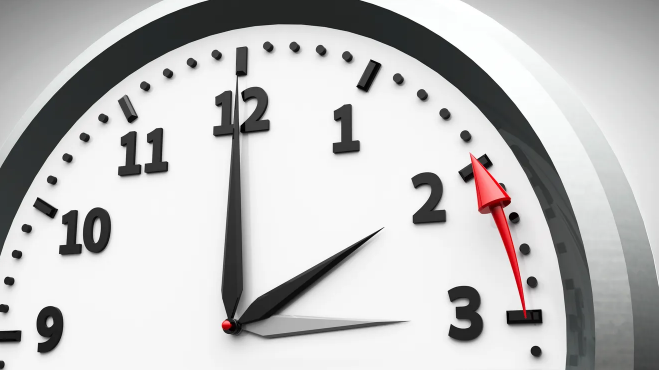When does daylight saving time 2023 end and plunge us into early darkness?
Whether you love the extra hour of sleep or dread the early sunset, it's almost time to set your clocks back, as Sunday, Nov. 5, marks the end of daylight saving time.
Clocks will fall back one hour at 2 a.m. As we inch closer to the impending time change, the sun will start setting just a few minutes after 6 p.m. After the time change, the sun will start setting roughly between 4:48 p.m. and 5:09 p.m.
While daylight saving time has been part and parcel of the United States for decades, few know the history behind our adoption of the practice or its quirky facts.

Daylight saving time: The fall back
The Uniform Time Act of 1966 established daylight saving time to improve efficiency and coordination in the transportation industry. The Act standardized time within the five existing time zones (Eastern, Central, Mountain, Pacific, and Alaska) and created a uniform time system.
Before the act's implementation, the decision to enforce daylight saving time was not up to the federal government, allowing towns and cities to exercise their discretion in whether or not to observe it. You could understand why that might be confusing.
Since its official inception, the start and end dates for daylight saving time have shifted over the years. Before 1986, it usually began on the last Sunday in April and ended on the last Sunday in October. By 1986, Congress passed a law that changed the start date to the first Sunday of April, beginning in 1987, while the end date remained the last Sunday of October.
The Energy Policy Act of 2005 moved the start and end dates from the first Sunday of April to the Second Sunday of March. It changed again in 2007, with the start date being moved to the second Sunday in March and the end date being moved to the first Sunday in November.
Federal law does allow states to maintain standard time, but they must get approval from Congress.
Whose idea was it?
While daylight saving time wasn't formally established until 1966, Benjamin Franklin suggested the practice in a satirical essay published in 1784. He peddled the idea to Parisians so they could change their sleep schedules and ultimately save money on candles and lamp oil.
Then, in 1907, an Englishman named William Willett penned a pamphlet titled "The Waste of Daylight" that advocated for advancing clocks in the spring and turning them back in the fall. He also encouraged people to get out of bed earlier during the summer.
Do all states and U.S. territories observe daylight saving time?
A handful of U.S. states and territories don't bother with daylight saving time. Arizona abandoned the practice in 1968 because the extra hour of sunlight meant energy usage would skyrocket to keep homes cool.
Hawaii, Puerto Rico, the U.S. Virgin Islands, Guam, and American Samoa don't adhere to it for the same reason: since they are close to the equator, daylight saving time is redundant.
Is it "savings" or "saving"?
You might be forgiven for saying "daylight savings" with an "s," but the correct term is "daylight saving time" since the practice is to "save daylight." Some people include a hyphen in the phrase, while others don't.
This article originally appeared on The Columbus Dispatch: Time to set your clocks back as daylight saving time 2023 is ending

